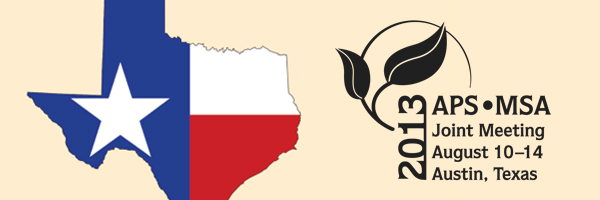APS Homepage
Back

Poster Session: Integrated Pest Management
© 2013 by The American
Phytopathological Society. All rights reserved.
308-P
Evaluation of fertility and fungicide programs on foliar diseases of bermudagrass (Cynodon dactylon).
A. PAYNE (1), N. Walker (1), D. Smith (2)
(1) Oklahoma State University, Stillwater, OK, U.S.A.; (2) University of Wisconsin, Madison, WI, U.S.A.
Leaf spot (LS), caused by Bipolaris spp., and dollar spot (DS), caused by Sclerotinia homoeocarpa, are of major concern to the turfgrass industry. One method of managing LS and DS is with fungicides; however, little is known about the influence of fertility inputs on these diseases. Five rates of nitrogen (N), 4 rates of potassium (K), and 3 disease control programs (conventional fungicide (CP), plant activated resistance mineral oil (PAR), and non-treated control) were evaluated across 2 cultivars (Patriot and U-3) in a split-split-split experimental design. Three and 12 applications were made for the CP and PAR programs, respectively. Nitrogen was applied every 14-d and K was applied every 28-d, both beginning in May. Disease severity and visual quality were assessed every 14-d from green-up. Disease severity was low during the study period. On 11 May 2012, LS was significantly (P<0.05) higher for treatments of N at 0.0 and 73.2 kg ha-1 compared to N at 146.5, 220.0, and 293.0 kg ha-1. The CP fungicide program resulted in less disease than PAR, which had significantly (P<0.05) less disease than non-treated control programs. Potassium at 0.0, 48.8, and 97.7 kg ha-1 resulted in significantly (P<0.05) less disease than K at 146.5 kg ha-1. For DS, CP and PAR programs were not different from each other and resulted in significantly (P<0.05) less disease than the control. These results imply fertility rates may influence foliar diseases of bermudagrass.